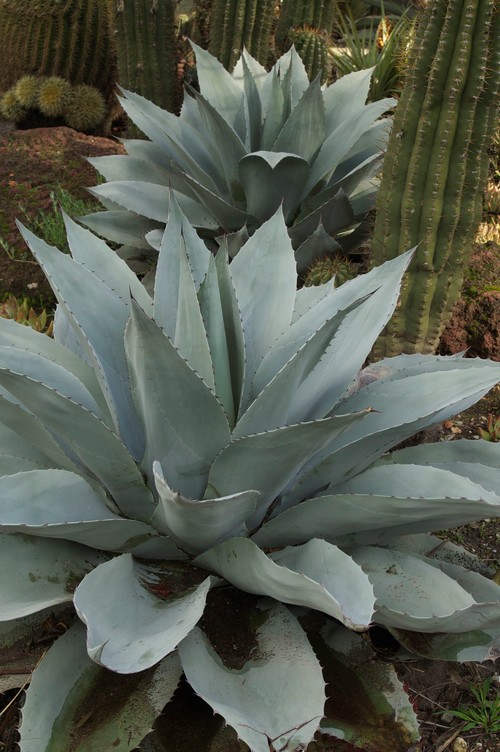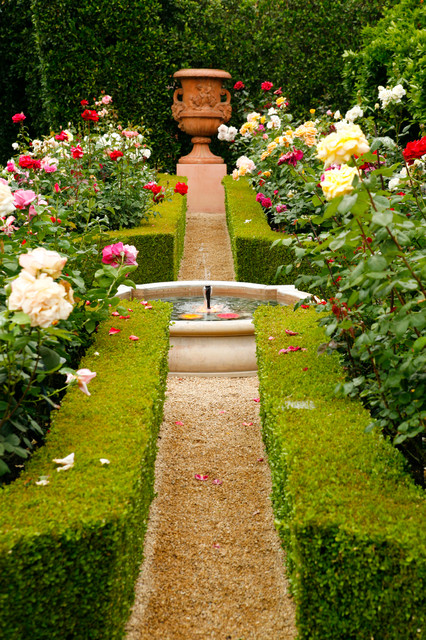Where Keukenhof is situated now, was a hunting area in the 15th century. Herbs for the kitchen of the castle of Jacoba van Beieren were also collected here; hence the name Keukenhof.
The current park was a section of the sizeable estate of Slot Teylingen, with beautiful untamed bushes and dunes. After the decease of Jacoba van Beieren Keukenhof fell into the hands of rich merchant families. Baron and baroness Van Pallandt invited landscape architects J.D. and L.P. Zocher, designers of the Amsterdam Vondelpark, to make a design for the garden around the castle. This design, in the English landscape style, has always been the basis of Keukenhof.
At the moment the estate belongs to a Foundation. On the initiative of the Lisse mayor of that time and a number of leading flower bulb growers and exporters, an open air flower exhibition was organised here for the first time in 1949. This expanded to an annually recurring event that has always drawn great numbers of visitors from all over the world. This is how Keukenhof became the park that we now know.
The park is 32 hectares wide and has 15 kilometres of foothpath. Keukenhof has surprises in store for visitors of all ages. Be sure to bring your camera along on this unique experience. The park is filled with blooming tulips, hyacinths, daffodils and other spring bulbs. At Keukenhof you can gain inspiration and relax in the beautiful surroundings!
Theme country Keukenhof 2013 – United Kingdom
The United Kingdom is well known for its varied range of gardens and provides an enduring source of inspiration for garden enthusiasts. That is why this year Keukenhof has chosen as its theme:
United Kingdom – Land of Great Gardens
Visit the exhibition on English gardens, admire their beauty, get tips from British and Dutch gardening experts for your own garden, and admire the spectacular flower mosaic of Big Ben and Tower Bridge. Have you ever seen such a blooming good work of art? This alone is reason enough to visit Keukenhof this year.
Flower Shows
More than 30 Flower Shows are an important part in the program of Keukenhof. Over 600 growers present their most beautiful flowers and leading arrangers create truly unique shows with them. You determine which grower has the most beautiful flower of the show. You can vote for the best flower per show. At the end of the season we will give out a prize per show to the winning grower.
In the Oranje Nassau Pavilion, every week another flower is the center of attention. In the Willem Alexander Pavilion you will find nearly 100,000 tulips displayed and from 10 – 20 May you will find here the largest lily show in the world. The Beatrix Pavilion is transformed into an orchid show of unprecedented proportions.
The flower shows at Keukenhof are an unique floral experience, every day.
GARDEN 2.0, the garden trend for 2013
Time does not stand still in the garden, trends also find their way here. The size of the garden is not so much important. It is much more about what is growing and flourishing, the decoration and maintenance. Increasingly, the garden is part of the daily life and that requires a different interpretation. It is time for an upgrade: GARDEN 2.0.
The Veggie garden is hip
International media have a great influence on our way of gardening. In gardening programs on TV beautiful gardens are being created within a few days, we are introduced to new varieties of flowers and plants and we get gardening tips from other countries. TV chefs do not only make a dish, but we see them standing in the field of the breeder. The origin of ingredients has become just as important as cooking itself. Inspired by these programs people create spots in their own garden for a small veggie garden in a raised border, a row of flowerpots or a stackable planter. It’s fun to see how all these species grow and then serve them unsprayed and daily fresh on the table. The veggie garden makes gardening hip again; after all onions produce beautiful flowers too. The bulb has been rediscovered and brings a colorful accent in early spring.
Indoor room and outdoor room
In new residential area’s, gardens are not so big and they often serve more as outdoor rooms than as gardens. They are private and cozy, have clear borders and are easy to maintain. The solid green is complemented with ready-to-go seasonal products. In spring pots of tulips, daffodils and blue grapes are used to bring color in to the garden. Growers pick up on this trend by offering a wider range of products. With these color accents on pot, the in- and outside even more interconnected. We put the same pots with hyacinths both in- and outside on the table. Garden furniture increasingly resemble indoor furniture and is also just as comfortable. The atmosphere and style run smoothly into each other so gardens become more and more personal.
Green in the city
City people are tired of the drab streets. So called guerrilla gardeners undertake quick actions, globally, to make cities greener. Pieces of fallow ground where new offices were planned, are temporarily being transformed into urban (veggie) gardens using simple means. The roofs of houses and flats are becoming more green, restaurants growing lettuce on their own roof. Fruit, vegetables and flowers from the garden are being exchanged or sold at local organized markets. Dull walls are lined with green. The neighborhood helps schoolchildren to build their own school garden. Gardens on roofs of large companies and hospitals contribute to a better environment. Staff and visitors can have lunch there, or simply relax. The materials used are contemporary, often casual, recycled and rethought. Through social media we share our activities and experiences rapidly with each other.
Anyone can garden
We let others enjoy our garden, either live or through the internet, by writing a garden blog or participate in an open garden tour. The first small garden campsites have been identified. A green sequel to couch surfing, a nice place to sleep in the garden. Thanks to the Internet, anyone can now create a cheerful flower garden, without having specific understanding of gardening. You receive a daily plant tip in your inbox. You google “Black Tulip” and not much later the order is in. Useful apps help us recognize flowers and plants and assists us in designing a square meter garden. Suppliers anticipate on this by offering ready-made mixtures of herbs, vegetables, perennials and bulbs.
Keukenhof has decorated seven amazing inspirational gardens. In these contemporary gardens, with the size of an average backyard, beautiful Dutch bulbs go together with the garden trend GARDEN 2.0. This trend has been developed in various styles, shows global trends and inspires visitors to get started in their own garden.
United Kingdom — Land of Great Gardens will be 2013 Keukenhof theme
During the last decade, Keukenhof has selected a country every season to be the focus of the park. The variable activities are emphasising its tourist attractions, which generates a lot of publicity in the theme country itself. In the opening period 2013 [from March 21st till May 20th] ‘Good Old Albion’ will be shown off as ‘United Kingdom – Land of Great Gardens’. In its own colourful way Keukenhof gives attention to the significance of the United Kingdom, which is extremely important as an export market for flower bulbs, as well as for a vast potential of visitors. In the year 2012 some 70,000 British passed the Keukenhof gates.
Keukenhof will open its gates to the public on Thursday March 21st for the 64th time. It is expected that at closure, eight weeks after, hundreds of thousands of visitors from all over the world will have enjoyed the beauty of the international flower exhibition. Keukenhof contributes substantially to the welfare of the Dutch tourist sector and the region.
Some seven million flower bulbs have been planted in the park of 32 hectares [equivalent of 80,000 acres] during the last few months. As every year they will blossom in order to given Keukenhof its full splendour in the early spring. Apart from the traditional outings, many novelties on the interface of nature and culture will be presented.
Indoor flower shows 2013
Oranje Nassau Pavillion
21 March – 26 March Tulip show
28 March – 2 April Freesia show
4 April – 9 April Gerbera show
11 April – 16 April Roses show
18 April – 23 April Daffodils show
25 April – 30 April Alstroemeria show & Iris show
2 May – 7 May Chrysantemums show
9 May – 20 May Carnation show, Calla show & Summerflowers show
Beatrix Pavillion
21 March – 20 May Anthurium show, Bromeliad show & Orchid show
Willem-Alexander Pavillion
21 March – 26 March Hyacinths show
21 March – 5 May Amaryllis show
21 March – 20 May Bulbs-In-Pot show
21 March – 5 May Potplants show
21 March – 5 May Show for flowering shrubs
21 March – 20 May Hydrangea show
1 Mai – 5 May Garden- and cuttulips show
3 Mai – 20 May Perennials show
10 May – 20 May Lily Show
For more information ; Website Keukenhof





















Related articles
- My Favorite Flowers From Bulbs That Come Back Year After Year in Our Dry Garden (hanburyhouse.com)
- The Famous Dutch Tulip-Fields. (florafocus.wordpress.com)
- Amsterdam Holidays (ebookers.com)
- Romantic Breaks in Europe (eurotunnel.com)
- Northwest Flower & Garden Show (seattletimes.com)





























































































































































































































